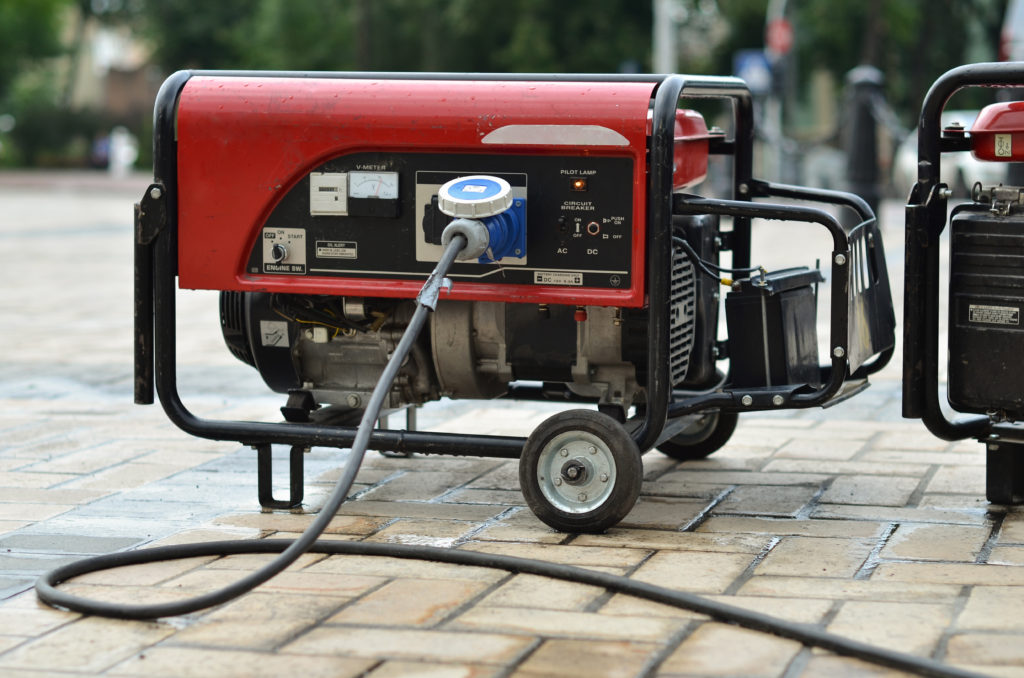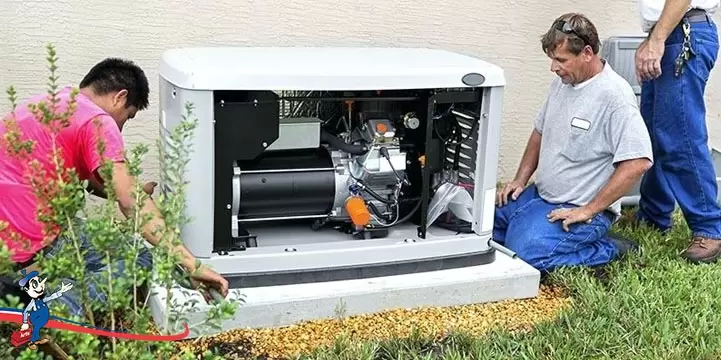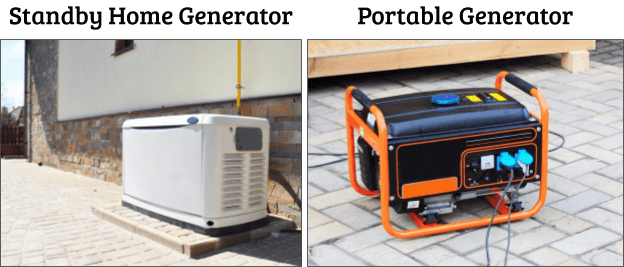Portable vs. Standby Generator (Best Choose for Home) – You could find yourself thinking about a home backup generator if severe weather events occur more frequently. Asking what kind of generator best suits your needs is necessary before determining what size generator you require. There are four different varieties of backup generators, each with a distinct set of advantages and disadvantages. For instance, a standby generator costs money but ensures that your entire house is powered. Other, less expensive methods exist that can lessen the impact of an outage. Portable generators are among them, but they generally require significantly more work than standbys. Both are capable of handling the necessities, so your choice is based on power and cost.
There is a lot you can learn about standby generators on Linquip. We can help you find the right standby generator for your application whenever you need one. If you’re interested in discovering more about these industrial devices, you might want to read Linquip’s article, “What is Standby Generator? Working Principle and Function“.
Have you worked with them before? We offer a wide variety of Standby Generator Products at Linquip so that you can find the generator that meets your needs. Are there any particular services you require for your standby generator? Have trouble installing a standby generator? Have you ever needed a guide? The Linquip platform provides FREE access to all Standby Generator Service Providers, and we are confident you will be satisfied with these services. The Linquip platform also offers the opportunity to request a free quote from all the Standby Generator Suppliers and Companies if you would like to know how much they cost.
Portable vs. Standby Generators: Which Should You Get?
There are several benefits to owning or installing an electric generator, whether you are connected to the grid or not. They may be used in your rural house, when picnicking or camping, as a backup in case the public supply runs out, in case of crises, in business establishments like hospitals, etc. The two main forms of fossil fuel-powered electric generators are portable and standby generators. They come in a variety of shapes, sizes, and designs. The fact that these generators use the same fuels—diesel, gasoline, propane, and natural gas—is one of their similarities. But what makes them apart from one another?

In this post, we’ll focus on the differences between portable and standby generators and determine which one is best for you. The key distinctions are that portable generators are more transportable, quieter, and less powerful than standby generators. However, we’ll go a step further by assessing the benefits and disadvantages before comparing their characteristics side by side.
Description of Portable Generators
Portable generators, as the name implies, are electrical power equipment that may be readily moved or taken from one area to another. The open-frame conventional generators and compact ultra-quiet inverter generators are the most common varieties.
These generators typically have tiny to medium tanks with a capacity of 0.9 to 20 gallons and run on natural gas, propane, diesel, or gasoline. New dual-fuel versions, on the other hand, may run on both gasoline and propane. All “portable” generators, yet, are they portable? Though not all portable generators are. Some have quite huge proportions and are greater than 150 pounds in weight. Large wheels and carry handles are among the characteristics that make them portable, qualifying them to be labeled as “portable” versions.

These generators may be utilized in homes, on building sites, and for outdoor recreational purposes. They produce power in the 1,000 to 25,000-watt range. Portable generators with outputs ranging from 1000W to 2500W often feature an easy-grip handle and a dry weight of less than 50 pounds.
Portable Generator Pros and Cons
Portable generators are not permanently installed in your house. They are often kept in a garage or shed and may be retrieved quickly to supply power in an emergency. Their advantages and disadvantages include:
Pros:
- Small and light and simple to keep in a shed or a garage.
- Utilizable at home, outside, and in mobile homes.
- Suitable for houses between 1000 and 3000 square feet.
- Some have enclosed designs.
- The “portable” models are quiet.
- Not as costly as the standby types; often just costs a few hundred dollars.
- Quick to set up, with no utility red tape to slow down the process.
- An electrician with a license is the only trade needed.
- Even though it is a manual technique, the transfer system is rapid and easy.
- Newer models include built-in carbon monoxide sensors that shut off the engine when CO levels are beyond a certain threshold.
Cons:
- Only able to power a small number of your devices, therefore not a full solution.
- Large quantities of carbon monoxide are produced as they operate which can be potentially fatal if not used appropriately.
- Gasoline engines are notably noisy.
- Large quantities of gasoline must be kept indoors.
- Every 5 to 10 hours, gasoline is required to keep it operating.
- Trips to the gas station regularly, since most portable generators consume 12-20 gallons of gas every day.
- Usually only has a little tank; it must be topped up with gas every few hours. During a severe storm, this may be challenging.
- In the case of a sudden outage, someone must be there to set up everything and supervise it’s continuing operation throughout the storm and subsequent outage.
- The homeowner must start the portable generator every month.
- Electrocution risks arise if handled and activated improperly.
- When the generator needs servicing, typically after 200 hours of operation, the homeowner must take the generator on their own to the neighborhood repair shop.
- Prone to theft.
- Some are not as portable.
Description of Standby Generators
Standby generators, often known as whole-house or fixed generators, are frequently permanently installed generators built for residential and commercial uses.
Standby generators may, however, also be utilized to power homes. From 8 kilowatts to 100 kilowatts or more, they may produce power. Most standby generators feature insulated coverings that make them waterproof. Because of this, they may be utilized outside permanently, rain or shine, unlike portable generators. Diesel, propane, or natural gas from the grid are the fuel sources for standby generators.
These generators can start automatically owing to a transfer switch, making them perfect for use in organizations that require a consistent power supply. For instance, they can start right away at a hospital in the case of a power loss. They are the most trustworthy kind of backup as a result.

Standby Generator Pros and Cons
Standby generators are permanently installed in your home. When there is a power outage, they link to your existing gas line and switch on immediately. Their advantages or disadvantages include:
Pros:
- Very powerful; capable of running your entire house, including the lights, TV, and refrigerator.
- Can continue to function even when the power is off.
- Large tank; connected to the gas line in your home, so you never have to refill it.
- Hands-free automated start-up, typically 10 seconds after an ATS detects an outage (automatic transfer switch).
- It is possible for a homeowner to burn between 15 and 50 gallons of propane or natural gas every day for a lengthy period without exerting any effort or paying attention.
- Weekly self-exercise is recommended.
- Unique sound attenuation makes it quieter than a portable generator powered by gas, diesel, or dual fuel.
- Increases the value of a home.
- insulated cover.
- Weatherproof.
Cons:
- Costly compared to portable generators.
- Costs may be high and include utility fees, permits, purchasing, installation, and maintenance in the case that your natural gas service cannot keep up with the demand from the generator.
- Inspections and permits must be obtained from the municipality and the utility to ensure appropriate installation.
- Not a portable generator; installed permanently.
- For this installation, two different trades are required: plumbers and electricians.
- Because of the possibility of carbon monoxide gas generation, the generator must be kept away from windows and doors.
- You must maintain setbacks from property lines as specified by your municipality.

Side-by-Side Comparison
We evaluate the two different generator types side by side based on a variety of factors, including power output, fuel consumption, cost, versatility, and more.
- Power Output: The most powerful generators are without a doubt standby models. Standby generators for businesses and entire homes may provide 10 to 50 kilowatts of electricity. Meanwhile, industrial standby generators with higher power output are available.
However, the power output of portable generators ranges from 2,000 to about 25,000 watts for conventional generators and from 1,000 to around 8,000 watts for inverter generators. So, if you want to power a whole house but don’t like standby generators’ lack of portability, the high-end conventional generator is the one for you. However, the standby generator is the clear winner in this case.
- Fuel-Efficiency: Although most portable generators provide less electricity, they often use less fuel than standby generators. However, you obtain superior fuel efficiency if you choose a standby model. Diesel, propane, and natural gas are the typical fuels for standby generators. However, a gallon of natural gas costs $1.5 to $2 less than a gallon of gasoline. Diesel is more expensive per gallon than gasoline, however, this is mitigated by the higher output per gallon supplied by standby generators.
The only benefit of portable generators is that the versions fueled by gasoline and propane generate cleaner electricity while making less noise. However, standby generators use less fuel.
- Price: Portable generators are cheaper than standby generators because of their size and power output capacity. Very strong portable generators with 10 to 18 kilowatts of electricity output cost between $2,000 and $4,000 on average. But the typical price range for standby generators is $2,000 to $20,000. Additionally, keep in mind that standby generators need to be installed, which may necessitate hiring an expert at an additional expense. So, portable generators come out on top in this debate.
- Versatility: More options are offered by portable generators. They may be used indoors, outdoors, and in recreational vehicles. To provide electricity for tasks like mowing the grass, you may drag a portable generator to the field. You can also use it to charge your cell phones, computers, and even your BBQ grill when camping in a distant location.
If wheels are added, even big, heavy generators can be moved around. Some need you to purchase a wheel kit, while others already come with one. The winner is portable generators that offer greater versatility.
- Run Time: Standby generators have a longer runtime than portable ones due to their extra-large tanks. Standby generators have a tank capacity. In contrast, the fuel tank sizes of portable generators vary from less than one gallon to over 20 gallons or more. For standby generators, there are separate tanks, though. Standby generator fuel tanks have a starting capacity of around 60 gallons. Depending on the frequency of usage, sub-base fuel tanks can hold 100 to 3,000 gallons and last for weeks or even months.
A portable generator can run for 8 to 10 hours on one to two gallons of gasoline. A standby generator will need far more fuel to run for the same amount of time. Standby generators are also quieter.
- Safety: Compared to conventional portable generators, standby generators emit less carbon monoxide, hence there is less of a danger of exposure. Additionally, because standby generators are frequently positioned outside, they remove this risk.
However, portable generators offer security measures like overload prevention and low oil shutdown characteristics that prolong the engine’s life.
- Installation and Maintenance: Portable generators are delivered nearly entirely assembled. The batteries, handles, and wheels may nonetheless need to be installed. If you follow the directions in the product handbook, you can do this on your own without any support.
However, standby generators need to be installed, which at the very least calls for assistance from a second person and may even necessitate the use of a technician from an authorized organization. However, you should be aware that installing a concrete slab to install the standby generator will incur additional costs. Standby generators require less maintenance. Once every two years or 200 hours of operation, standby generators require an oil change. After using a portable generator for two to six months, the oil has to be changed. While both require monthly, semi-annual, and yearly maintenance, you might need to engage a professional for standby generators.
This time, portable generators exceed standby models.
Final Observations
We’ve seen how portable generators do better than standby generators. Convenience, price, functionality, and sustainability are the main distinctions between portable and standby generators. Portable generators need less expensive installation demands and maintenance even though standby generators are more fuel-efficient, have longer runtimes, and are more powerful. Portable generators are economical and versatile, as we have shown in this comparison between portable and standby generators. Your needs, though, should guide your decision. The standby generator is the ideal option for you if your house or place of business needs up to 15 kilowatts of load power since you need a quiet model. However, a portable generator would work well for you if what you’re looking for is a mobile generator for your picnics, RVing, boating, or usage anywhere possible.
Download Portable vs. Standby Generator (Best Choose for Home) PDF
This article is available in PDF format for your future reading and reference. The download can be started by clicking here.
Buy Equipment or Ask for a Service
By using Linquip RFQ Service, you can expect to receive quotations from various suppliers across multiple industries and regions.
Click Here to Request a Quotation From Suppliers and Service Providers
Read More on Linquip
- Best Portable Generators: Everything You Need to Know
- 3 Best Portable Power Station Generators +Pros & Cons
- The 8 Best Standby Generator
- Induction Generator vs Synchronous Generator: A Comprehensive Comparison
- Alternator vs Generator: Your go-to guide to learning their difference
- Can I install a Standby Generator Myself? (An All-In-One Guide)
- The Difference Between Prime & Standby Generators: A Comprehensive Guide
- How Long Can A Standby Generator Run Continuously? A Comprehensive Guide
- What Is the Difference Between a Whole House and a Standby Generator? The Best And Most Complete Guide)
- 5 Best Propane Generators: A Practical Guide
- The 9 Best RV Generators (Clear Guide)
- The 10 Best Ozone Generators (Ultimate Guide)
- Best Dual Fuel Generators (Clear Guide)
- Top 10 of The Best Quiet Generators
- The 7 Best Whole House Generators
- Top 7 of The Best Steam Generators in 2022



